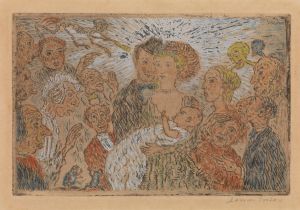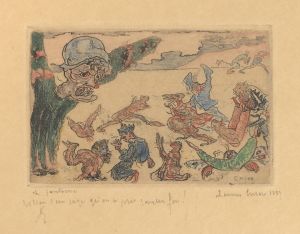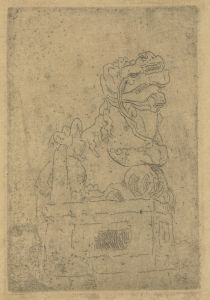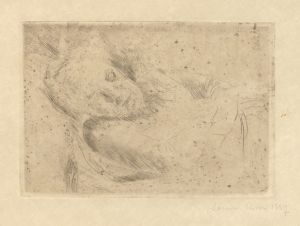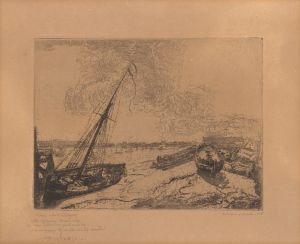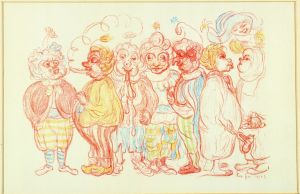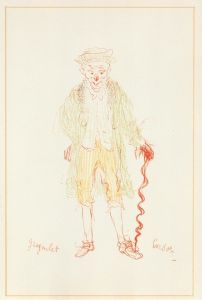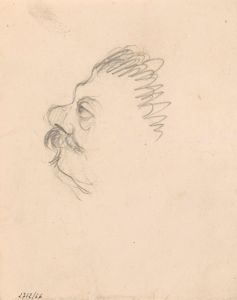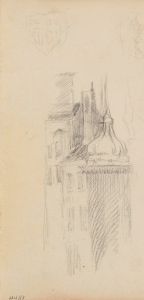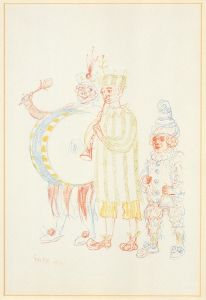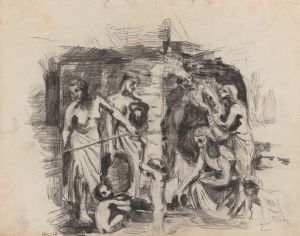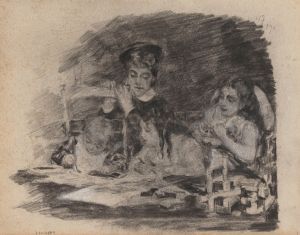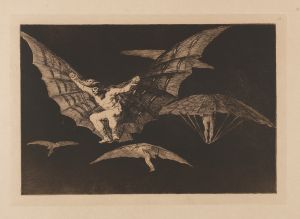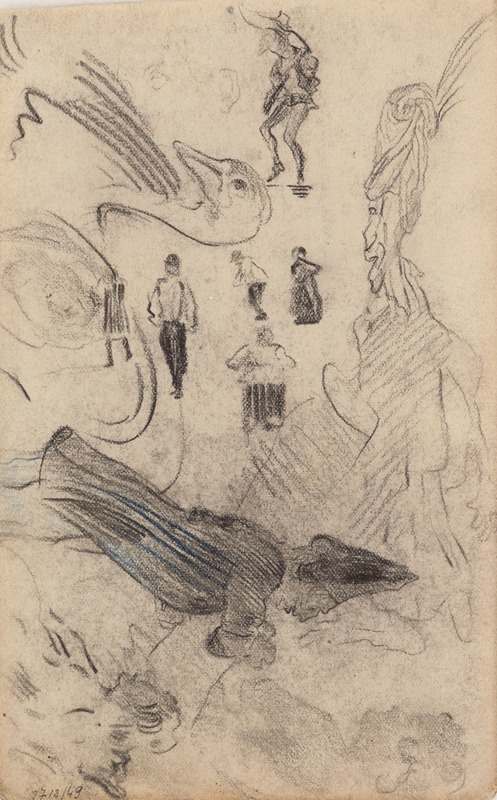
Silhouettes and Grotesque Figures
A hand-painted replica of James Ensor’s masterpiece Silhouettes and Grotesque Figures, meticulously crafted by professional artists to capture the true essence of the original. Each piece is created with museum-quality canvas and rare mineral pigments, carefully painted by experienced artists with delicate brushstrokes and rich, layered colors to perfectly recreate the texture of the original artwork. Unlike machine-printed reproductions, this hand-painted version brings the painting to life, infused with the artist’s emotions and skill in every stroke. Whether for personal collection or home decoration, it instantly elevates the artistic atmosphere of any space.
"Silhouettes and Grotesque Figures" is a painting by the Belgian artist James Ensor, who is renowned for his unique and often provocative style that blends elements of symbolism and expressionism. Ensor was born in 1860 in Ostend, Belgium, and spent much of his life there, drawing inspiration from the coastal town's vibrant atmosphere and its carnival traditions. His work is characterized by its vivid use of color, intricate detail, and often macabre or satirical themes.
James Ensor created "Silhouettes and Grotesque Figures" during a period when he was increasingly interested in exploring themes of the grotesque and the absurd. This painting exemplifies his fascination with the human condition, societal norms, and the masks people wear—both literally and metaphorically. Ensor's work often features masks, skeletons, and fantastical creatures, which serve as a commentary on the superficiality and hypocrisy he perceived in society.
The painting itself is a complex composition that showcases Ensor's skill in blending the real with the surreal. It features a variety of figures, some of which are rendered as silhouettes, while others are depicted in a more detailed and exaggerated manner. This juxtaposition creates a dynamic visual experience that invites viewers to explore the deeper meanings behind the figures' expressions and interactions.
Ensor's use of color in "Silhouettes and Grotesque Figures" is particularly noteworthy. He employs a vibrant palette that enhances the otherworldly quality of the scene. The bold contrasts and vivid hues draw attention to the figures, emphasizing their theatrical and often unsettling presence. This use of color is a hallmark of Ensor's style and contributes to the painting's emotional impact.
The themes present in "Silhouettes and Grotesque Figures" reflect Ensor's broader artistic concerns. Throughout his career, he was preoccupied with the idea of the mask as a symbol of identity and deception. In this painting, the grotesque figures can be seen as a metaphor for the hidden aspects of human nature and the societal pressures that compel individuals to conform to certain roles or personas.
Ensor's work was not always well-received during his lifetime. His unconventional style and subject matter often provoked criticism from the art establishment. However, he remained committed to his vision, and his persistence eventually earned him recognition as a pioneering figure in modern art. Today, Ensor is celebrated for his innovative approach and his ability to capture the complexities of the human experience.
"Silhouettes and Grotesque Figures" is a testament to James Ensor's unique artistic voice and his ability to challenge viewers' perceptions. The painting continues to be studied and appreciated for its bold exploration of themes that remain relevant in contemporary society. Ensor's legacy endures as an artist who dared to confront the darker aspects of life with both humor and insight, leaving a lasting impact on the world of art.





